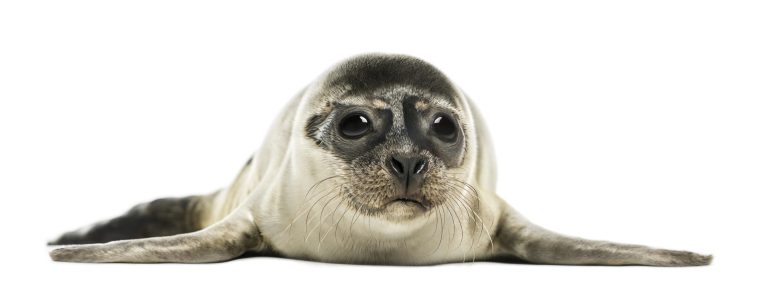Seal entanglements along Dutch shores this year have sharply risen. By early May, as many entangled seals had been helped by one of the three operational seal rescue centers in the Netherlands – Zeehondencentrum Pieterburen, A Seal and Ecomare – as in all of 2023, during which around 40 animals received assistance, according to a statement released by Zeehondencentrum Pieterburen.
So far this year, workers at rescue centers have found seals caught in a variety of items, including nylon cords, potato sacks, frisbees, fishing nets and lines, plastic barrel lids, t-shirts and plastic from construction sites. Seals who end up stuck in these sorts of items are at risk of dying due to starvation or suffocation. While many seals can be freed and released, particularly when they only have fat layer injuries, animals sometimes can’t be saved when they’ve been entangled for long periods and have suffered muscle damage.
The problem has been steadily increasing over the past few years. According to data from Zeehondencentrum Pieterburen, there were eight entanglement incidents in 2010, a number that rose to 38 in 2019. This year so far there have been at least 40. More are likely to follow, suggests Emmy Venema of Pieterburen to broadcaster NOS. The number of incidents may actually be higher, as the centres often end up helping animals in distress who’ve been found and reported by people walking along beaches. Seals who are in remote areas where people seldom venture aren’t likely to be seen and reported.
The reasons for the increase in entanglements aren’t entirely clear. The phenomenon may have something to do with the combination of the sheer volume of marine litter and the fact that it often gets stirred up during bad weather. This year’s storms may have increased the amount of trash floating about for seals to encounter. ‘The strong winds at the beginning of this year caused turbulent water, which may have caused more debris to be released from the seabed,’ states Marco Boshoven of Pieterburen. Increased shipping in the North Sea, along with the growing number of windmills, may have also altered the sea in ways that negatively impact seals due to space reduction, suggests Sophie Brasseur, a researcher at Wageningen University.
The waters and shores around the Netherlands are home to two types of seals: regular and gray seals. Regular seals are native to the Netherlands, while gray seals are originally from the British Isles and only began visiting Dutch shores relatively recently. Young gray seals are particularly likely to end up entangled, which may have something to do with their innate playfulness and interest in exploring the environment.
The three operational seal rescue centers in the Netherlands respond to all reports of entangled and injured seals. They’re able to provide immediate assistance to many seals on beaches, while others require further help and need to be transported to receive veterinary care. They recommend that if you encounter a sick or injured seal, stay nice and far away – at least 30 meters – and call in the experts by dialing 144.
The centres recently piloted a Seal Response Team with specially trained veterinarians and technicians who can visit remote areas by boat to deliver on-the-spot care to entangled animals. These teams are able to help seals spotted on tidal flats and in the water. After a lengthy development and planning period, the crew recently set out for their very first official rescue attempt. Unfortunately they weren’t able to provide assistance due to high winds that made conditions difficult.
For those interested in offering seals a bit of love, there are often volunteer opportunities available at Pieterburen, A Seal and Ecomare. Pieterburen welcomes visitors to witness releases of rehabilitated seals and A Seal has a Sealkeeper for a Day program.
Written by Lorre Luther
